- Heat the milk to about 90 degrees F. (Cow temperature less a few degrees that the dairy maids would have lost in transport anyway.
- Infect the milk with some cultured buttermilk. (mesophilic lactobacillus) These would have been native to the cow's teats and since the period milk wouldn't have been pasteurized, the bacteria wouldn't have needed to have been re-added. (Wait 60 minutes for the bacteria to get going in the new environment.)
- Here's where we start picking up the period steps. We add our rennet. I did not use Markham's rennet recipe, because I think it's nasty. I used double strength vegetable rennet. Not period, but chemically very similar to calf rennet, which I have also used. Very little difference in final product.
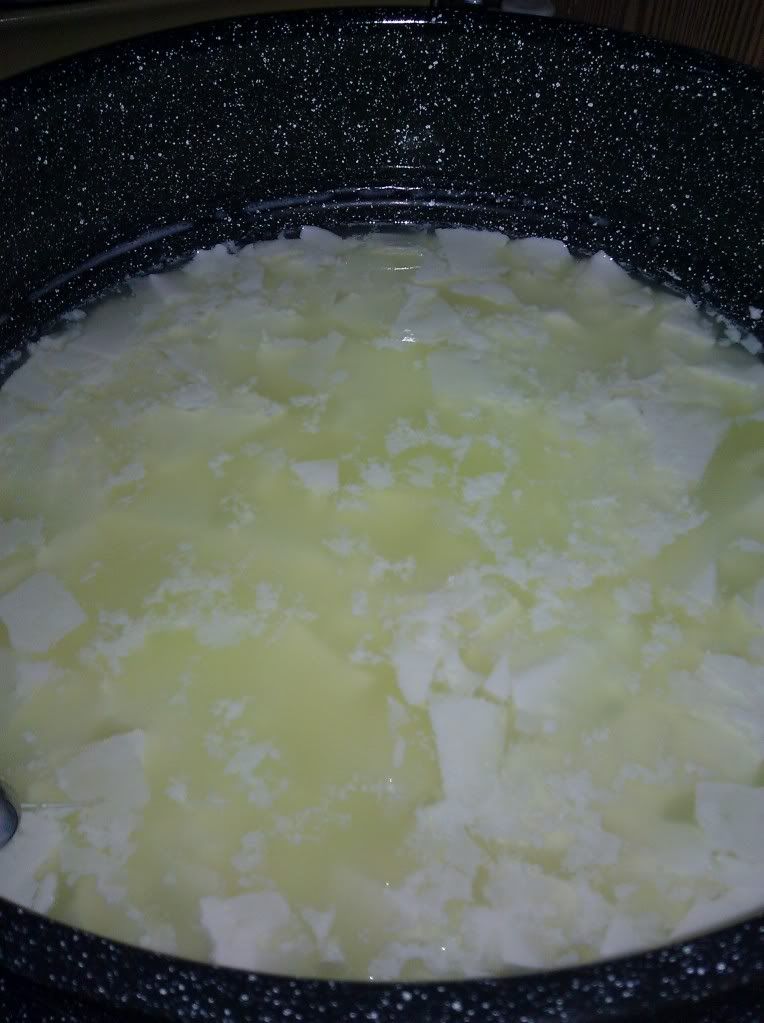
Hand stirred curd. - After 45 minutes, I cut the curd. After cutting it, I gave it 15 minutes to heal, and then I gave it a stir with my bare, washed hand.
- Then my instructions said to let the curd settle and press it to the bottom of the pot with my hands, and then scoop off as much whey as possible with a shallow dish. This seemed horrendously inefficient (typical non-cooking-person cooking instructions), so I placed a piece of sterilized cheese cloth on top of the curd, and scooped out the whey that seeped through the cloth. It's MUCH easier to do this way without losing curd. The picture shows what my curd looked like after I'd scooped off about a gallon of whey - which I set aside for a dessert experiment... (Chocolate brunost, per Deja's request.)
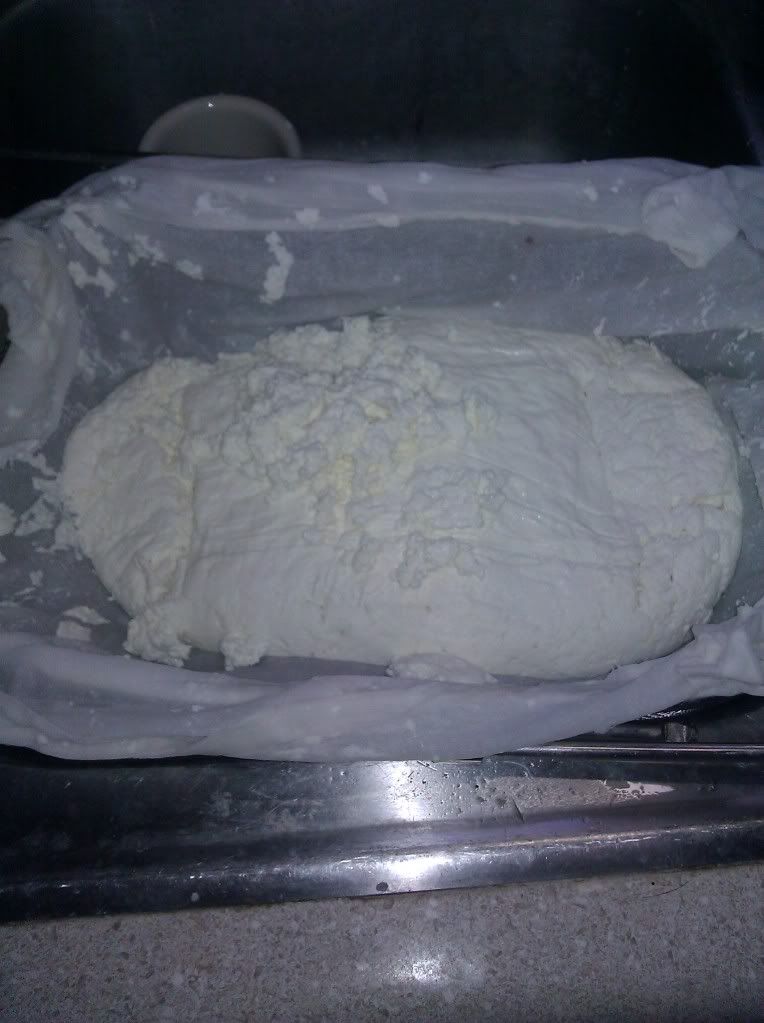
Curd mass after light pressing
by hand - The next step involved carefully scooping the curd mat into the "mold" and pressing it under a light weight. I scooped the curd mat into a piece of cloth on a screen strainer, because I didn't have a basket to scoop my curd into as the initial mold. I folded the cloth over the top of the curd and pressed it gently but firmly with my hands. After about 30 minutes of fussing, the curd was much more firm and ready for the press.
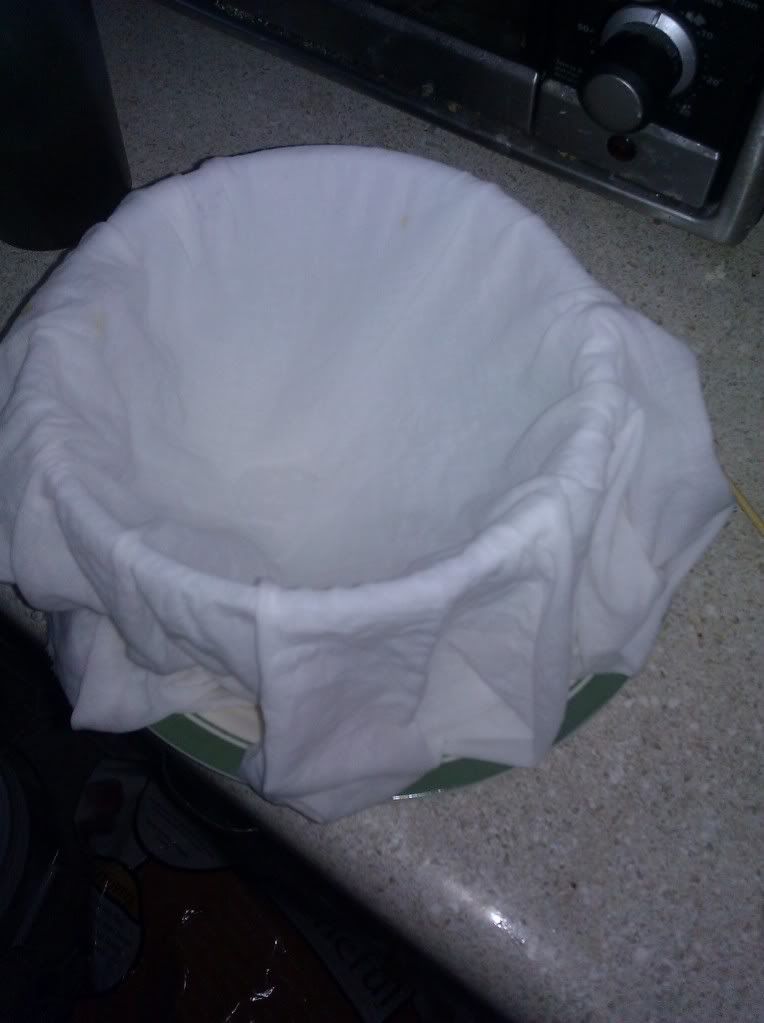
Mould lined with damp
cloth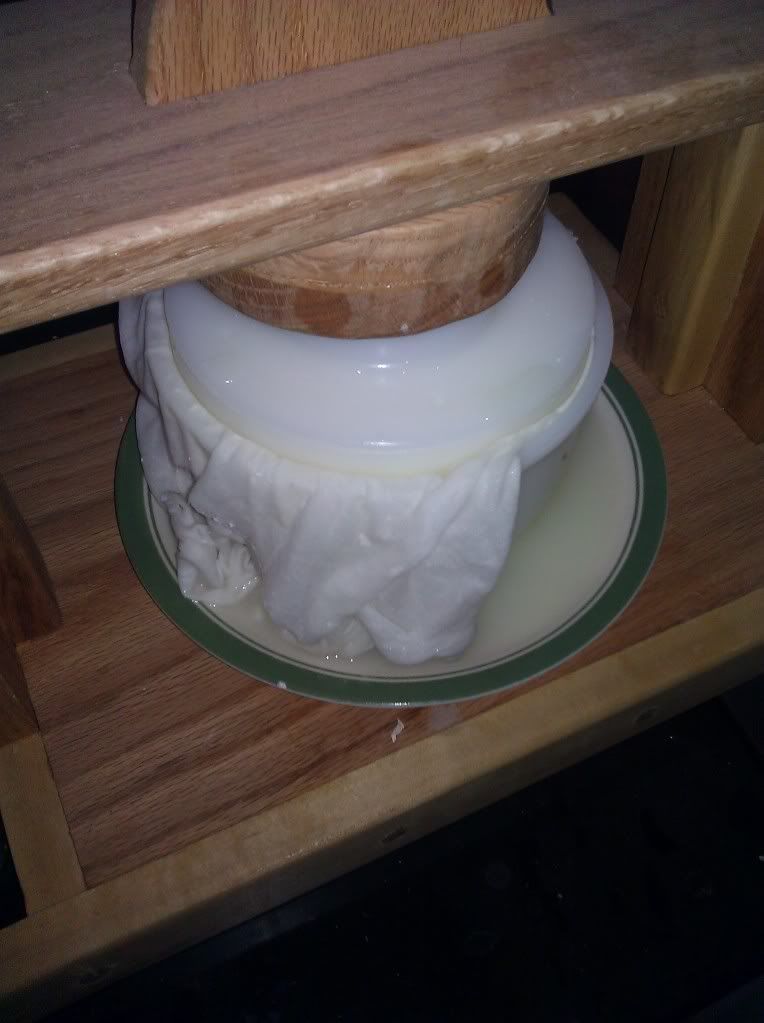
Mould with curd in the
press - Then my directions say to turn out the curd into a clean cloth that has been dampened with cool water and press it in my big press. Here are the mould dressed with a wet cloth, and the curd in the great press:
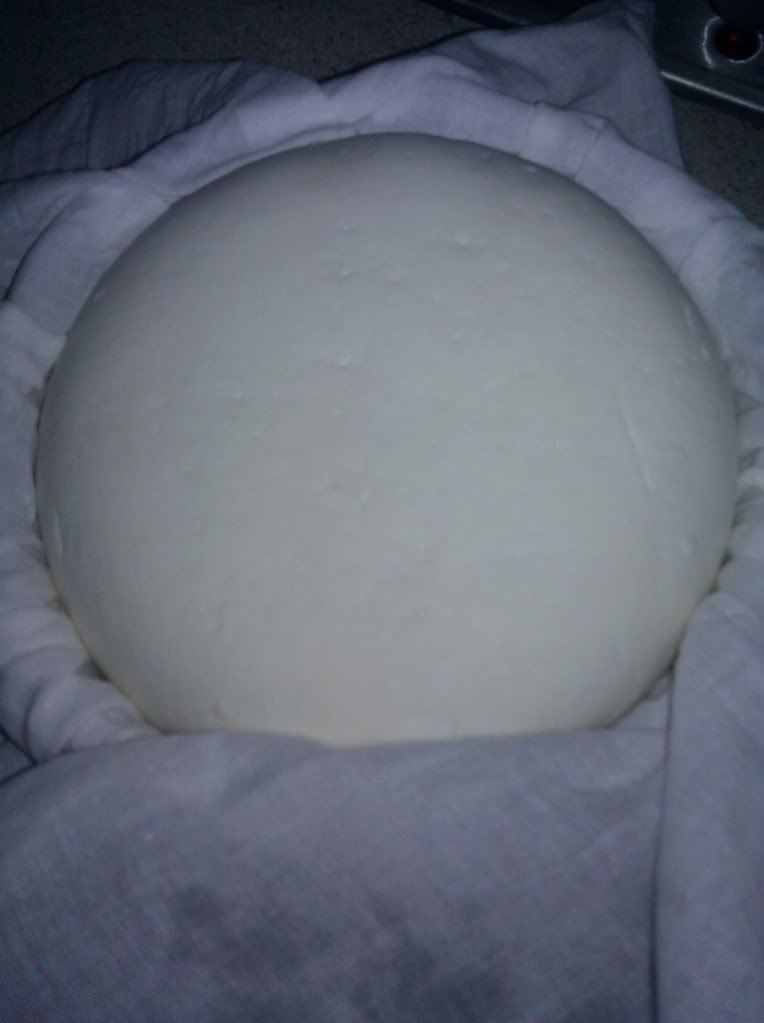
Curd flipped into a new
dry cloth. - Following these steps, I am meant to wait for 30 minutes, and then turn out the curd into a dry cloth and return it to the press. This cloth should be exchanged 5-6 times for a new clean, dry cloth in the next 24 hours, each time the cheese is flipped and returned to the press.
- Tomorrow, I shall return the cheese to the press in the mold with no cloth and leave it there for about twelve hours.
- After I remove the cheese from the final pressing, I need to rub it in salt and start the curing process...
Saturday, November 5, 2011
Markham's Cheese In Practice:
Everything starts out "normal" with this cheese... Which is to say that we have to do a couple of steps to bring pasteurized milk back to a state similar to the one that Markham's milk maids would have gotten from milking a cow and taking milk directly to the dairy.
Labels:
cheese
Subscribe to:
Post Comments (Atom)
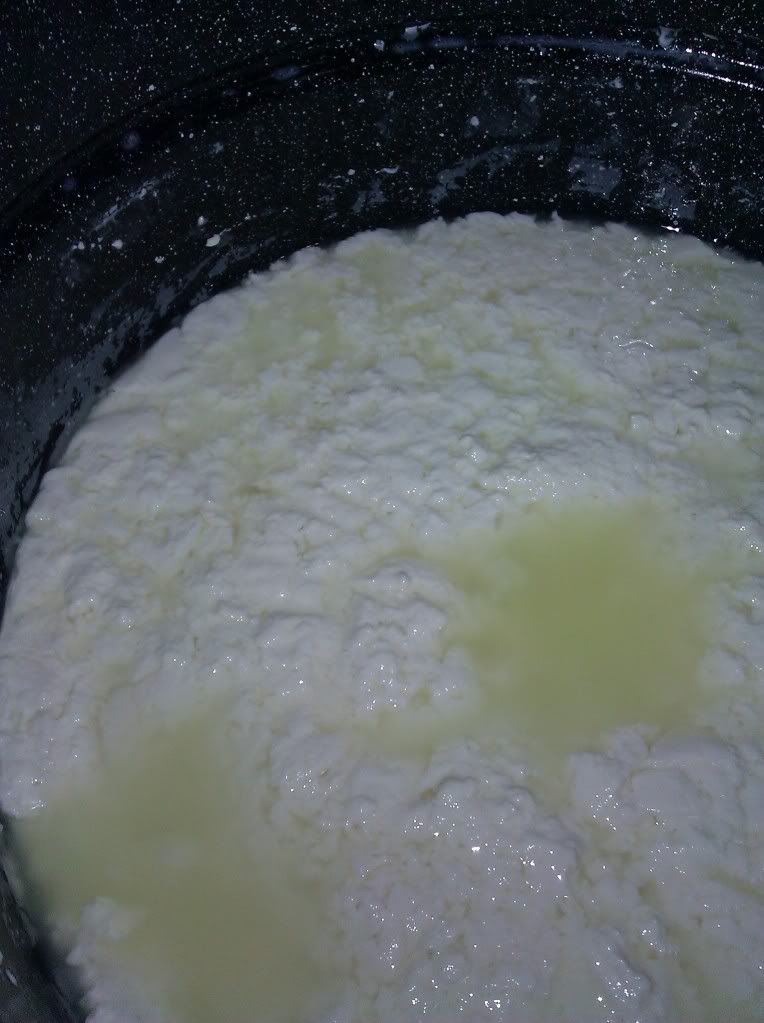
0 comments:
Post a Comment